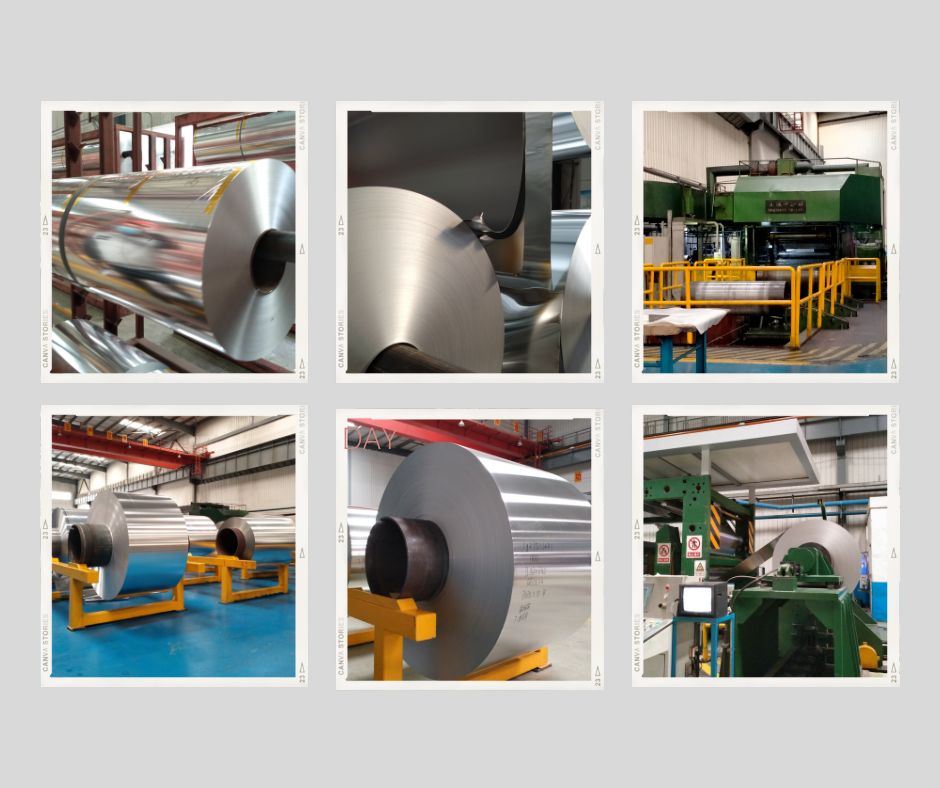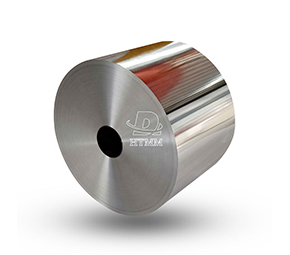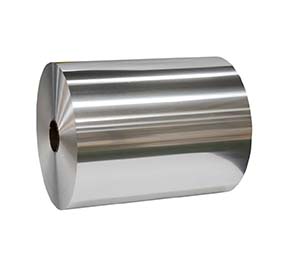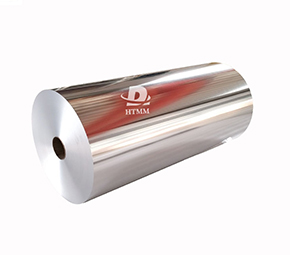1. Aluminum foil thickness: What is the difference between 11mic and 12mic?
The aluminum foil "mic" is actually short for micron, and 1mic is 0.001 mm. 11mic and 12mic aluminum foil, to be clear, are two types of aluminum foil products with a 1 micron thickness difference. Don’t look at this mere 1 micron difference, it’s very different in real applications.
In terms of thickness, 12mic Jumbo aluminum foil 29 cm is about 9% thicker than 11mic. This number may not seem large, but it will make a significant difference in the performance of the aluminum foil. Because 12Mike aluminum foil is thick, it has good tensile strength and is less prone to breakage when run in high-speed packaging machines. At the same time, the barrier performance is also stronger, especially the barrier effect against oxygen, water vapor and light, which is particularly important for food packaging that needs to be kept fresh for a long time.
But an increase in thickness also means an increase in weight. For the same size aluminum foil roll, the 12Jumbo aluminum foil 29 cm will be about 9% heavier than the 11Mike, which means transport costs will increase accordingly. Furthermore, the increase in thickness will result in a slight decrease in ductility. In some applications that require very fit packaging, the 11mic may be a better choice.
In terms of uses, 11mic Jumbo aluminum foil 29 cm is often used for packaging common foods, such as chocolate, butter, etc.; 12mic, on the other hand, is more commonly used in occasions with higher protection requirements, such as pharmaceutical packaging, high-end food packaging, and some industrial uses. Many major brands with strict packaging requirements often specify the use of 12mic aluminum foil material.
2. Current market price information: How much does it sell for per kg?
The price difference comes primarily from several aspects: First, the cost of raw materials. Higher quality aluminum ingots are more expensive. Second, the manufacturing process. The quality of aluminum foil produced by more sophisticated rolling equipment is more stable but also has higher equipment depreciation costs. There is also a brand premium. Naturally, well-known brands will cost more.
Note that the price of aluminum foil will fluctuate with the market price of aluminum ingots. For every 1,000 yuan/tonne increase in the price of aluminum ingots, the price of aluminum foil will increase by about 1-1.5 yuan/kg. Therefore, paying attention to the price trend of aluminum ingot futures is very helpful in predicting changes in the price of aluminum foil.
3. Five key factors affecting the price of Jumbo aluminum foil 29 cm
Aluminum foil prices have not been set out of thin air. It is influenced by many factors. By understanding these factors, we can better understand the timing of purchases.
The cost of raw materials is the basis for determining the pricing of aluminum foil. Aluminum ingots account for 60-70% of the production cost of aluminum foil, so when the price of aluminum goes up, the price of aluminum foil will inevitably go up. Aluminum prices are influenced by multiple factors, including international commodity markets, exchange rates, and tariff policies. For example, when the U.S. dollar strengthens, international aluminum prices made in U.S. dollars become more expensive for domestic consumption.
Different manufacturing processes also result in price differences. Aluminum foil produced by continuous casting and rolling costs 10-15% less than the traditional hot rolling process; Manufacturers using imported high-precision rolling mills, on the other hand, have better product quality, but the equipment investment is larger, and the product price will increase accordingly. In addition, certain treatments such as surface coatings and special annealing processes will increase costs.
Market supply and demand directly affect price trends. Every year around the Spring Festival and before the Mid-Autumn Festival and National Day is the peak demand season for aluminum foil, and prices typically increase by 3-5%; Summer, on the other hand, is often off-season, and prices are relatively stable or even slightly lower. When the production capacity of the industry is concentrated, it can also lead to a price war, and then the buyer can get a more favorable price.
Transportation costs are about 5-8% of the total cost of aluminum foil. Aluminum foil is large in size but relatively light in weight, and the transport radius is gen

4. Smart shoppers must have: Five money-saving tips for purchasing aluminum foil
After mastering the rules of market value, the next step is how to buy smarter. Here are some practical money saving tips:
The timing of the purchase is critical. According to past year data, aluminum prices are relatively low in March-April and September-October every year, so it is more cost-effective to purchase aluminum foil at this time. In addition, suppliers are often more willing to offer preferential pricing at month-end and quarter-end to complete sales. You can also save a lot of money by avoiding peak demand before the Spring Festival and before the Mid-Autumn Festival.
Bulk purchases are an effective way to reduce costs. Generally speaking, an increase in purchase volume from 1 ton to 5 tons can reduce unit prices by 3-5%; an increase of 5 tonnes to 10 tonnes could further reduce it by 2-3%. If the company uses large volumes, it may consider concentrated purchasing with other companies in the industry to obtain large discounts. However, it is also necessary to pay attention to inventory costs, and it is generally advisable to maintain use for 1-2 months.
When choosing a supplier, don’t just focus on big brands. The product quality of some mid-sized aluminum foil manufacturers in China is already pretty good, but prices are 8-15% lower than the big brands. It is recommended to first try it in small batches, and then expand the purchase after confirming that the quality meets the standards. Have 2-3 qualified suppliers at the same time, who can not only compare prices, but also avoid a passive situation when one supplier has a problem.
Long-term contracts are beneficial for both parties. Signing supply contracts with suppliers for half a year or a year and locking in the range of price fluctuations can not only avoid cost surges when aluminum prices rise sharply, but also allow suppliers to arrange production with confidence, and usually get a 3-5% price discount. The contract may stipulate that the price fluctuates with the market price of the aluminum ingots, but sets an upper limit, which is fair to both parties.
Finally, the method of payment is also special. Cash payments typically yield a 2-3% discount, while receivable bills can increase the price by 1-2%. If the company’s cash flow allows, choosing cash payments is a good way to save money. In addition, suppliers are more tolerant of payment terms during the off-season, and they may strive for longer account periods.
5. 11mic and 12mic Aluminum Foil Price Trend Forecast
What will aluminum foil prices look like in the next six months to a year? A comprehensive analysis of various factors is expected to show a mild upward trend.
From a raw material perspective, global bauxite supply is tight, energy costs remain high, and electrolytic aluminum production capacity is limited. These factors support high aluminum prices. The industry expects aluminum ingot prices to fluctuate between 18,000-20,000 yuan/tonne, and the corresponding aluminum foil cost pressure is still relatively large.
In terms of market demand, the demand for aluminum foil has maintained an annual growth of 5-8% with the development of industries such as food, pharmaceuticals, and new energy. Strong demand for high-quality products such as aluminum foil and high-barrier food packaging aluminum foil, especially for new energy vehicles, could push up the overall price level.
Policy factors should not be ignored. National environmental protection requirements are becoming more stringent, and aluminum foil manufacturers will need to invest more costs in environmental protection benefits, and this portion of costs will eventually be reflected in product prices. Moreover, if export policies are adjusted or the international trade environment changes, it will also affect the price of aluminum foil.
Based on extensive judgment, it is expected that the price of 11mic aluminum foil may fluctuate 5-8% on current basis, and the mainstream price range will move to 27-34 yuan/kg; The price range of 12mic aluminum foil can be 28-36 yuan/kg. Of course, if there are major changes in the global economy, such as a severe recession or energy crisis, this forecast may need to be adjusted.
FAQ:
All questions about aluminum foil prices explained at once
In actual purchases, people often face certain problems. Here are some general points:
"Why do different manufacturers offer such different prices for the same specification of aluminum foil?"
It mainly depends on the manufacturer’s production cost control capabilities and brand positioning. Larger factories have better equipment and standardized management, but operating costs are higher; Smaller factories may have lower labor costs, but slightly less consistency in quality.





